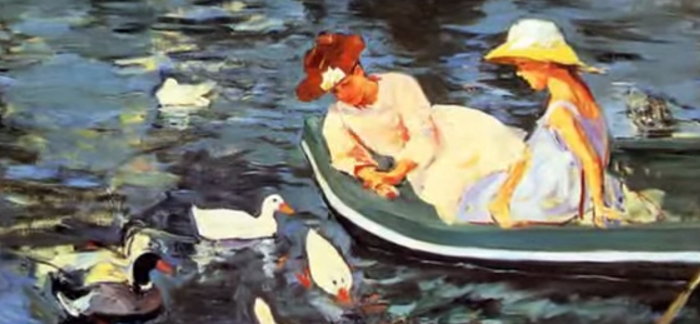Many people are familiar with the work of Mary Cassatt, even if they don’t realize it at the time. This US painter was an integral part of the Impressionist movement that took hold in the latter part of the 19th century. She was born in Pennsylvania, but would eventually make her way to Paris where she would spend the rest of her life.
1. A Rebel in Disguise
The Cassatt family had a high social standing. Her father was an investment broker, so money was never an issue. Her educational background was to help improve the social status of her husband, be a good mother, and some creative work. She fell in love with painting and then rebelled against the social standards of the time by pursuing a career.
2. Artistic Genius That Was Self-Taught
Cassatt was frustrated by the slow educational pace of the US artistic scene. That’s why she moved to Paris. She wanted to learn from the old masters at her own pace. She began to study and copy the works of art she found at the Louvre. In just two years, she would have one of her paintings displayed at the Paris Salon.
3. Never Accepted
When war broke out in 1871, Cassatt was forced to move back home. She tried to paint, but her father would not help her with any of the supplies she needed. She couldn’t sell her paintings and the Great Chicago Fire took some of them away forever. She may have seen great success in Europe, but Cassatt could not gain a footing in her home country.
4. Problems With Paint
As Cassatt began to grow in fame, she began to experiment with her own personal style. It was no longer good enough to create something that could be successful commercially. Her new works often brought criticism because they were “too accurate” or “too colorful.” Her portraits are direct and honest, which makes them truly unique from an Impressionist standpoint.
5. Robbed In the End
Near the end of her life, Cassatt lost the ability to see because of diabetes. This prevented her from creating more artwork that was serious and it made her very unhappy. For the last decade of her life, she felt robbed because she couldn’t do what she loved.
Mary Cassatt used her influence to help mentor many young US artists throughout her life, encouraging those from the high social class of the time to purchase artwork from aspiring painters. Her efforts helped the creative community grow and almost every art museum in the US has benefited in some way because of her work




